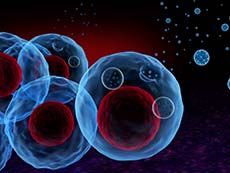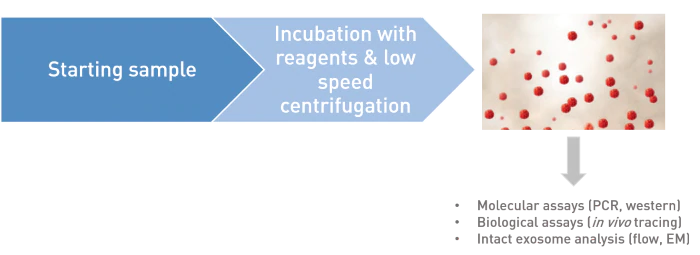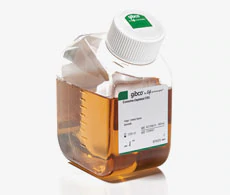Exosome Products for Testing and Research
- Exosome Products for Research
- Exosomes FAQs Video Series
- Exosomes–The Next Small Thing: A Mini Documentary Series
- Exosomes Frequently Asked Questions (FAQs)
- Exosomes Webinars
- Antibodies
- Flow Cytometry
- Cellular Imaging
- Labeling Chemistry
- Fluorophore selection
- Immunoassays
- Neurobiology
- Cell Function Assays
- Quantum Dots & Microspheres
- Cell Isolation & Expansion
- Cell Tracing, Tracking, and Morphology
- Cell Signaling Pathways
- Single Cell Analysis
- Microbiological Analysis
- Fluorescence Microplate Assays

What are exosomes?
Exosomes are small (30–150 nm) vesicles containing sophisticated RNA and protein cargo, that are constantly secreted by all cells in vitro and in vivo. Exosomes have many intriguing functions within human body, including intercellular communication and signaling. These extracellular vesicles have become the focus of exponentially growing interest, both aimed at understanding their biological functions, and using them towards practical applications such as development of non-invasive diagnostics and advanced therapeutics.
We offer an array of exosome products and tools for isolation, characterization, and analysis of their RNA and protein content, as well as in vitro and in vivo tracing to help you further the understanding of these fascinating entities.
Exosome testing and analysis products
Exosome isolation kits and reagents
Ultracentrifugation protocols can be tedious and time consuming. Now you can easily isolate intact exosomes from cell culture media or any body fluid using the flexible and scalable Total Exosome Isolation reagents. These products and accompanying protocols are ideal for a wide range of experiments, including processing low sample volumes and handling multiple samples.

Isolation of exosome subpopulations
Total exosomes enriched from cell culture (by using the Total Exosome Isolation reagents or ultracentrifugation) can be further purified into specific subpopulations by immunomagnetic capture. Use the Dynabeads-based CD9, CD63, CD81, or EpCam-specific reagent, or combine the Streptavidin reagent with your choice of a biotinylated antibody to purify any population based on a surface antigen.

